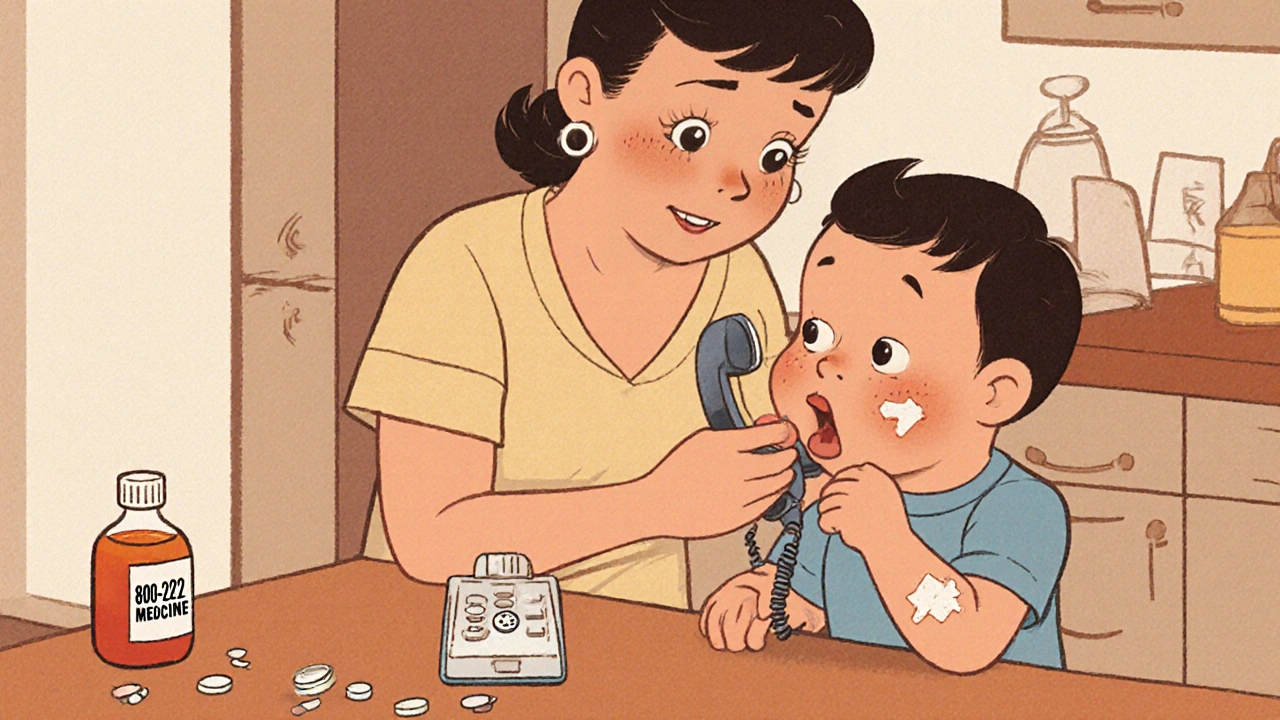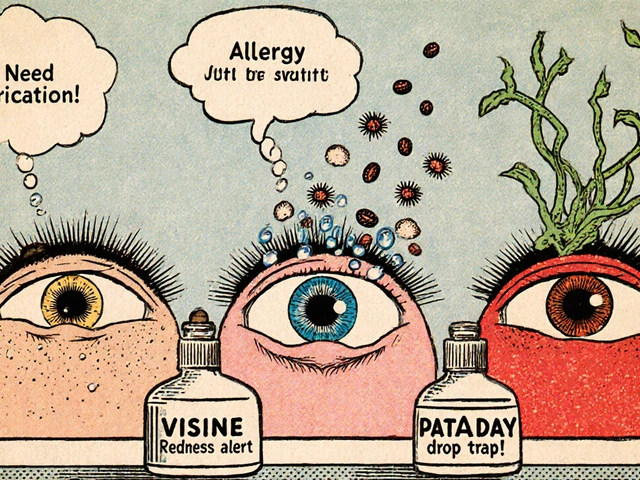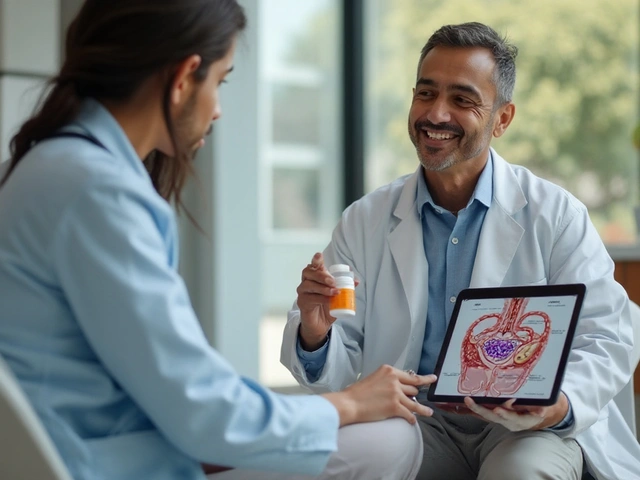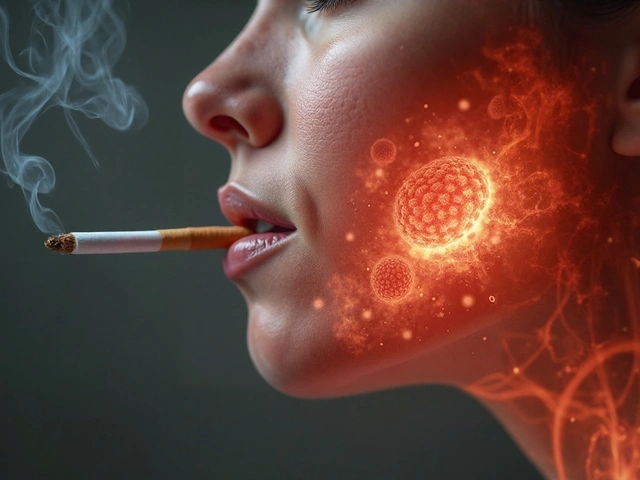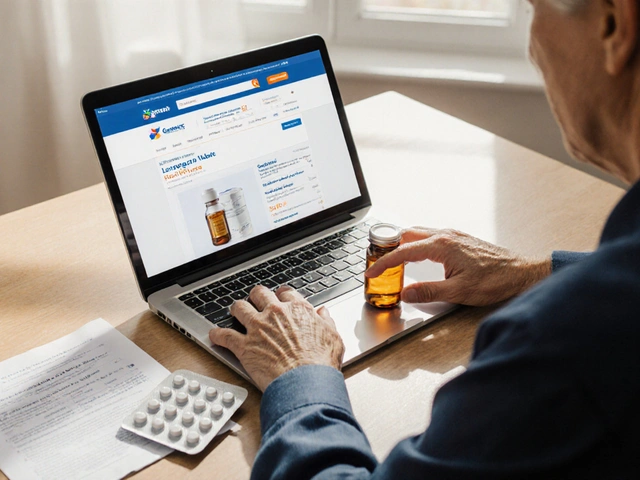Every year, over 60,000 children under five end up in emergency rooms because they swallowed the wrong medicine. It’s not rare. It’s not something that only happens to other people. It happens in homes where parents think they’ve childproofed everything - because they did. But pills don’t always stay in the bottle. Chewables look like candy. Liquid meds sit on the counter. Patches stick to skin like stickers. And when it happens, time is the only thing that matters more than panic.
Step 1: Stay Calm and Act Fast
The first thing you do when you realize your child swallowed medicine they shouldn’t have? Don’t yell. Don’t run around. Don’t try to make them throw up. Just pick up the phone and call Poison Control right away. In the U.S., dial 800-222-1222. That’s the number you need to memorize, not the hospital. Poison Control specialists are trained to guide you through the exact next steps based on what was swallowed, how much, and how old your child is. They don’t just give generic advice - they tailor it. And they’re available 24/7.While you’re calling, quickly check your child’s mouth. Use your fingers to gently remove any leftover pills, liquid, or patches. Don’t force anything. Don’t stick your finger down their throat. Just clear what’s visible. If it’s a patch - like fentanyl or nicotine - check their skin, gums, and even the roof of their mouth. Patches can stick anywhere.
Step 2: Never Induce Vomiting
You might have heard older advice to give syrup of ipecac to make a child throw up. That advice is outdated. It’s been removed from all official guidelines since 2004. Why? Because forcing vomiting doesn’t help much - studies show it changes outcomes in less than 1% of cases. But it can hurt. Vomiting increases the risk of choking or breathing in stomach contents, which can lead to pneumonia. It also makes it harder for doctors to treat the poisoning later. If your child vomits on their own, that’s fine. Collect the vomit in a bag or container to show medical staff. But don’t make them do it.Step 3: Know When to Call 911
Not every accidental ingestion needs an ambulance. But some do - and you need to recognize the signs:- Difficulty breathing, wheezing, or stopped breathing
- Loss of consciousness or extreme drowsiness
- Seizures or uncontrollable shaking
- Pupils that are unusually large or tiny
- Heartbeat that’s too slow (under 50 beats per minute) or too fast
- Blue lips or fingernails
If you see any of these, call 911 immediately. Don’t wait. Don’t drive yourself unless you have no other option. Emergency responders can start life-saving treatments on the way. Heart medications like beta-blockers can drop blood pressure to dangerous levels within 30 minutes. Acetaminophen overdoses can silently damage the liver over hours. You can’t wait to see if they "get better."
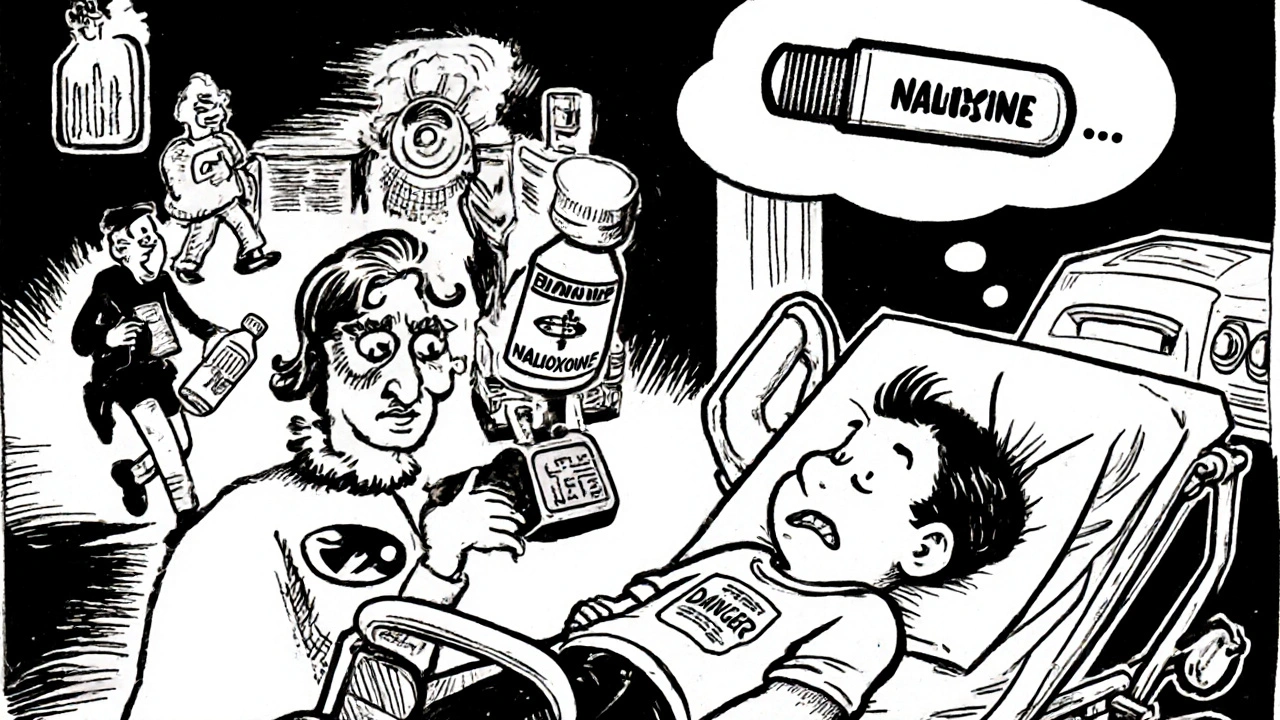
Step 4: Bring the Right Information to the Hospital
When you get to the ER, the most helpful thing you can do is bring the medicine container. Even if it’s empty. Even if it’s half-used. The label tells doctors what’s in it, how strong it is, and how much was taken. If you don’t have the bottle, try to remember:- The name of the medicine (e.g., "ibuprofen," "amlodipine")
- The strength (e.g., "10 mg," "200 mg per 5 mL")
- How many pills or how much liquid was swallowed
- When it happened
Doctors use this to calculate the dose per pound of body weight. A single 10 mg amlodipine tablet - a blood pressure pill - can send a 2-year-old into cardiac arrest. But if the child weighs 40 pounds and only swallowed half a tablet, the risk changes. That’s why details matter.
Step 5: What Happens in the Hospital
If the ingestion is serious, your child will be monitored for at least 12 hours - sometimes longer. Doctors will check vital signs every 15 minutes at first, then every 30 minutes. They’ll run blood tests to see if organs are being affected. For certain poisons, there are specific antidotes:- Naloxone for opioid overdoses - it reverses breathing problems fast.
- Octreotide for sulfonylurea pills (diabetes meds) - stops dangerous drops in blood sugar.
- Sodium bicarbonate for tricyclic antidepressants - helps stabilize heart rhythm.
Activated charcoal is often given within the first hour to bind the poison in the stomach. But it won’t work for everything. It’s useless against bleach, gasoline, or strong acids. And it’s not always needed. The decision is made by the toxicology team based on the substance and timing.
If your child swallowed a diabetes pill, they’ll check blood sugar every 30 minutes. Hypoglycemia can sneak up without symptoms. A child might just seem sleepy - but their brain is starving for sugar. That’s why monitoring is non-negotiable.

Why Most Parents Get It Wrong
A 2022 survey found that only 61% of parents could correctly name the Poison Control number. Yet 92% of those who called said they felt confident after talking to a specialist. That gap - knowing the number - is deadly. One parent on Reddit waited 45 minutes trying to find the pill bottle before calling. Her child ended up in the hospital for 36 hours after swallowing one blood pressure pill. Another parent called immediately after their child took three antihistamines. The Poison Control center told them to watch for drowsiness and give water. No hospital visit. No IV. Just careful monitoring at home.What’s more, 78% of parents still believe they should make their child vomit. That’s not just wrong - it’s dangerous. The American College of Medical Toxicology says vomiting causes aspiration pneumonia in 7% of attempts. That’s one in every 14 kids who are made to throw up.
How to Prevent This From Happening Again
The best emergency response is no emergency at all. Here’s what actually works:- Lock it up. Use a locked cabinet, not just a high shelf. Children can climb. They can pull down chairs. CDC data shows homes with locked storage have 85% fewer incidents.
- Use flow restrictors. All liquid medicines sold in the U.S. now come with these. They limit how much can pour out at once. They cut accidental ingestion by 58%.
- Don’t leave meds on counters. Not even for a minute. Not while you’re answering the door. Not while you’re making coffee. One second is enough.
- Use smart pill dispensers. Devices like Hero Health alert you if a dose is missed and lock automatically. They’re expensive - $89.99/month - but they reduced access by 73% in Johns Hopkins trials.
- Teach kids medicine isn’t candy. Even toddlers can learn that pills are for grown-ups only. Use clear language: "This is medicine. It can make you very sick if you eat it."
The FDA is rolling out new child-resistant packaging by 2025 that requires two separate safety mechanisms - not just a twist cap, but also a push-and-turn system. That’s expected to cut exposures by 30%. But you don’t have to wait. You can start today.
What to Do After the Emergency
Once your child is safe, take a breath. But don’t stop. Talk to your pediatrician about a safety plan. Ask for a home safety checklist. If you’re struggling to keep meds out of reach - whether because of busy days, mental health, or just exhaustion - reach out. You’re not alone. There are free home safety programs run by local health departments and poison control centers. Some even send someone to your house to help you childproof.And if you’re feeling guilty? Don’t. Accidents happen. The goal isn’t to blame yourself. The goal is to make sure it doesn’t happen again. Because the next time, you’ll know exactly what to do.
What should I do if my child swallows a pill I’m not sure about?
Call Poison Control immediately at 800-222-1222. Even if you’re not sure what it is, they can help you identify it by description or color. Don’t wait for symptoms. Don’t try to Google it. Poison Control has access to real-time databases and can give you step-by-step instructions in under a minute.
Can I use activated charcoal at home?
No. Activated charcoal is a medical treatment that must be given under supervision. It’s not available over the counter for home use in the U.S. for children. Giving it yourself can cause choking or lung damage if inhaled. Always wait for professional guidance.
Is it safe to give my child milk or water after they swallow medicine?
Only if Poison Control or a doctor tells you to. For some poisons, like acids or alkalis, giving liquids can make damage worse. For others, like acetaminophen, fluids may help flush the system. Never guess. Follow expert advice.
What if my child swallowed a medication patch?
Remove the patch immediately with gloved hands. Check their mouth, skin, and gums for any pieces that may have broken off. Wash the skin area with soap and water for at least 15 minutes. Call Poison Control right away - patches can deliver a full dose slowly over hours, even after removal.
How long should I monitor my child after a small ingestion?
At least 4 to 6 hours, even if they seem fine. Some drugs, like antidepressants or diabetes pills, cause delayed symptoms. Watch for changes in behavior, breathing, or alertness. If they become unusually sleepy, dizzy, or unresponsive, call 911. Don’t wait for vomiting or obvious signs.
Are child-resistant caps really effective?
They help, but they’re not foolproof. Studies show 1 in 5 toddlers can open them within 5 minutes. That’s why locking meds in a cabinet is still the best protection. Child-resistant means "hard for a toddler," not "impossible."
